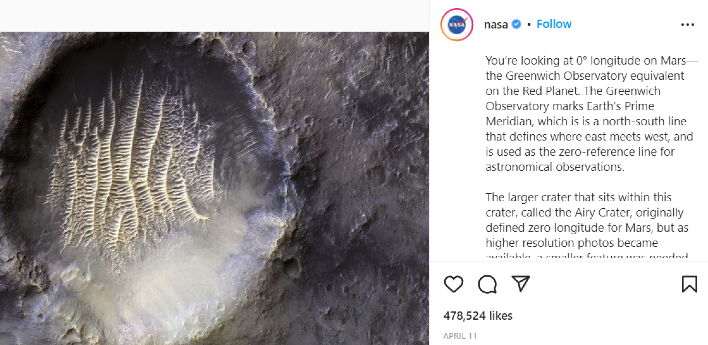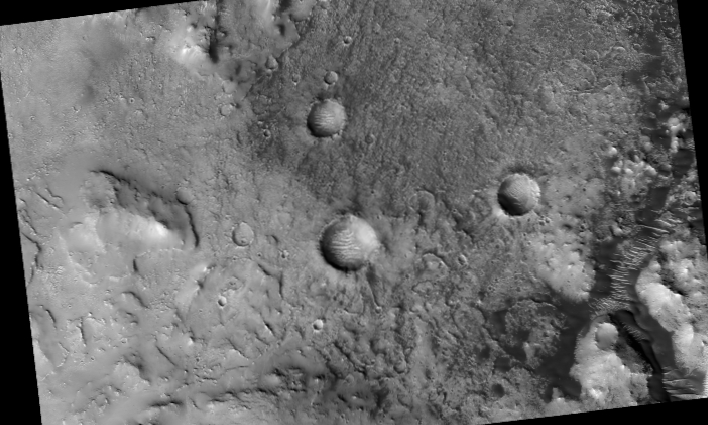NASA's Spectacular Photo Of A Martian Crater Looks Like An Alien Footprint
NASA recently shared a photo from the Mars Reconnaissance Orbiter that captured where zero longitude is on Mars. The image was captured by the orbiter's powerful HiRISE camera which has helped in numerous other discoveries. The images sent back from the orbiter have helped scientists learn more about Mars, including the history of water flows on or near the planet's surface. But the image that was shared on Instagram has some saying it resembles an alien footprint.
At first, the larger crater that the crater in the picture NASA shared sits within, called the Airy Crater, was what scientists referred to as zero longitude for Mars. But as higher resolution images started becoming available, a smaller feature was required. Airy-0 (zero) was selected because it would not require any further adjustments of existing maps. As a comparison, the Greenwich Observatory is Earth's equivalent to Airy-0 on the red planet.

The brilliant ridges in the crater are known as transverse aeolian ridges (TARs). "TARs are a feature we commonly see in craters and other depressions on Mars," stated Abigail Fraeman, a planetary scientist and deputy project scientist for NASA's Curiosity rover, to Live Science.
Back on March 30th, the European Space Agency (ESA) released a pair of images of craters showing evidence of "brain terrain," or ripples that were strikingly similar to the ridges of the human brain. These were actually lines caused by ice deposits, rather than TARs.

The Mars Reconnaissance Orbiter, or MRO, has been in operation since 2006 and also serves as a key data relay station for other Mars missions.


